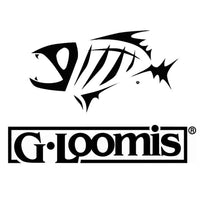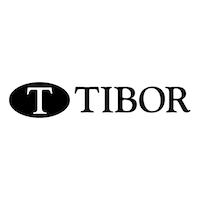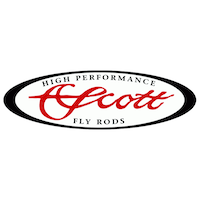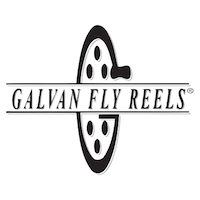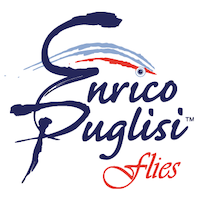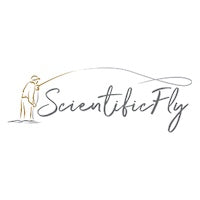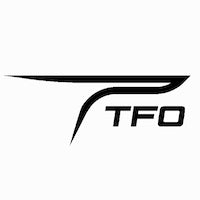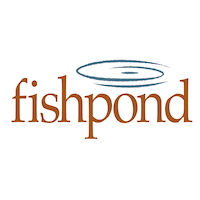Fly Tying Glossary
Tying flies involves lots of terminology that is sure to confuse anyone just getting started. Here is our attempt at making the process a little easier for beginners and providing a resource for those of us who have been tying for a little longer. This list is a work in progress that will be modified and added to on a regular basis.
Information is divided into Terminology, Tools, Materials, Techniques. Entries under each heading are alphabetized.
Terminology
- Aught - Pronounced almost the same as "ought." A term used in denoting the sizes of hooks and thread. 1/0 would be read "one aught." In relation to hooks, hooks with an aught number are larger than those without and the larger the aught number, the larger the hook. #3/0 is larger than #1/0 is larger than #1 is larger than #6. With thread, the opposite is true. 8/0 thread is very thin and appropriate for dry flies, while 6/0 is thicker, working well for larger dries and nymphs, and 3/0 is useful for streamers and other larger flies. To make matters worse, sizing is not standardized so one manufacturer's #2/0 hook or 6/0 thread may be larger or smaller than that of another manufacturer. Yeah, we agree. It's confusing.
- Black Nickel Plating - A black protective coating used on saltwater hooks to increase corrosion resistance.
- Bronze Plating - Bronze is the most commonly used coating on freshwater hooks. It is not corrosion resistant enough for use in saltwater.
- Butt End - The butt end of a tying material is the portion that originally attached that material to the animal. With bucktail, for example, the tips are the thin ends furthest from the animal and the butt ends attach to the skin. This same terminology also applies to synthetic material, like craft fur, that is attached to a base. With materials that are consistent from end to end, for example EP Fiber, the end tied to the hook is sometimes referred to the butt end. This is entirely due to the orientation, not to a difference in the material from one end to the other.
- Chemically Sharpened - A chemical sharpening process produces a very sharp, smooth point with excellent penetration.
- Collar - One to several wraps of a feather, or other material with fibers sticking out of a central core, placed just behind the head. The wraps are placed close together to form a tight whorl of materials sticking out from the hook shank.
- Denier - Pronounced "den-ear." A unit of measure used in the textile industry and increasingly used to designate fly tying thread size. In contrast with the standard aught sizing (3/0, 8/0 etc.) denier is a standardized measurement and can be reliably used to compare thread across brands and materials. Based on the weight of silk and defined as the mass in grams of 9000 meters of the fiber. A 9000 meter strand of silk has a mass of about 1 gram and a single strand of silk is one denier.
- Duratin Plating - A protective coating used on a saltwater hook to increase resistance to corrosion.
- Feather Barbs - The fibers extending away from the stem in two directions to create the surface of the feather. The barbs are the fibers that radiate out from the hook when a feather is wrapped onto a hook.
- Feather Barbules - Barbules are small protrusions extending from the feather barbs. The barbules have small hooklets on the sides that attach nearby barbules together. The stem divides into the barbs which divide into the barbules which are connected together with small hooks. The barbules of plume feathers, such as marabou, as well as the plume-like downy fibers at the base of many feathers, lack these hooks.
- Feather Stem - The feather stem or shaft, technically termed the "rachis," is the central part of the feather to which the barbs are attached.
- Hackle - A term used with a descriptor to refer to a specific type of feather. For example, dry fly hackle, neck hackle or saddle hackle. Dry fly hackle indicates the use while neck and saddle hackle indicate where on a bird the feather comes from. "Hackle" is also used to refer to the whorl of barbs made by a feather that has been wrapped onto a hook. For example, the hackle on a parachute adams.
- High Carbon Stainless Steel - A metal from which most hooks are made. It is stronger and less expensive than standard stainless but less resistant to corrosion. High carbon steel hooks require an additional coating for protection from the environment.
- Hook Barb - The angled back roughly triangle shaped protrusion behind they point, intended to keep the hook from slipping out of a fish’s mouth.
- Hook Bend - The curved part of the hook, starting at the end of the shank and ending at the point.
- Hook Eye - The eye at the front of the hook made from bending the hook wire into a ring. Used to tie your fly to the leader.
- Hook Gap or Gape - Distance from the hook shank straight down to the tip.
- Hook Point - The sharp “business” end of the hook, intended to penetrate a fish’s mouth.
- Hook Shank - The straight part of the hook, directly behind the eye.
- Materials Hand - The hand you use to hold materials in place while you tie them in. For most tyers this will be your non-dominant hand. Also see Thread Hand.
- Nickel Plating - A shiny protective coating used on saltwater hooks to increase corrosion resistance.
- Post - A bunch of material gathered together on the top of a dry fly around which hackle is wound. The post sticks straight up and is wrapped with thread to give it a base solid enough to support the wraps of hackle.
- Recipe - A fly recipe is a list of materials used to tie a fly in a standardized order, typically beginning with the hook and thread. Materials are listed in the order in which they are tied in, providing the tyer with much of the information needed to tie the fly.
- Serrated - Serrated scissors have small grooves cut into one or both blades. These serrations work to grab fibers that might otherwise slide down the blades of the closing scissors. Serrations simplify making precise cuts in synthetics and other slippery fibers. The downside is that serrated blades are difficult to sharpen.
- Stainless Steel - A corrosion resistant metal from which saltwater hooks are made.
- Standing End - The long end of thread or other stranded material that is wrapped around a hook. On a spool of thread, the tag end would be the cut off end on the outside. The standing would be the opposite side which is wrapped around the spool for later use.
- Tag End - The “cut off” end of thread or stranded tying material, which is typically wrapped around the hook when tying a fly. As opposed to the standing end. When starting thread on a hook or tying in material, the tag end is the end you are working with. Analogous to the “butt end” on materials that aren’t wrapped. Once a material is wrapped in and cut off, the short cut off piece still on the hook is also called the tag end. Also referred to as the "working end."
- Tempering - Heating up metal to change the molecular structure and increase strength. Used in the manufacture of fishing hooks.
- Thread Hand - The hand you hold the bobbin with while wrapping thread onto the hook. For most tyers this will be your dominant hand. Also see Materials Hand.
- Tie-in point - The location along the hook shank at which you will tie in a material. As you work up the hook shank, different materials will have different tie-in points.
- Ultraviolet or UV - Materials with a UV in the name indicate that the material exhibits extra visibility in the ultraviolet spectrum. True ultraviolet light is invisible to the human eye but important to many living creatures, including some fish. Some materials reflect ultraviolet light (UVR) while others fluoresce ultraviolet light (UVF).
- Working End - See Tag End
Tools
- Bodkin - A bodkin is a needle at the end of a short handle. It has many uses, including positioning materials, picking out trapped hackle, fur and dubbing, and applying head cement. It can be helpful to have bodkins of different lengths and thicknesses
- Bobbin - A fly tying bobbin is a thread holder with a metal barrel, through which the thread runs. It holds the thread securely, provides some tension, and allows the tyer to place thread precisely. Get a good bobbin. The barrels of inexpensive bobbins are usually relatively soft metal. Over time, thread will cut a groove into a metal tipped bobbin, which will fray or cut the thread. Most nicer bobbins include a ceramic or agate tip, which will keep this from happening
- Bobbin Threader - A bobbin threader is a simple tool intended to help pull the thread through the barrel of the bobbin. The simplest is a loop of wire or plastic that you push through the bobbin, stick the end of your thread through then pull out again. Metz makes another type of threader that is much quicker and more convenient to use. You push the end through the bobbin, spin it a couple times to catch the thread, and pull it back out again.
- De-barbing Pliers - A strong pair of flat nosed pliers are very helpful for not only flattening or lowering barbs but also for flattening monofilament for weed guards. Even better if they have cutters behind the jaws for separating bead chain, cutting wire, and trimming off excess wire core brushes.
- Drying Rack - Unless you are using UV cure for head cement, you will need a place to put your flies to dry. Hanging them from your bobbin cradle arm works well. A foam fly stage that fits on your vise post works better and is also a good place to put hooks you plan to tie with.
- Dubbing Comb - If you are tying with synthetics you will benefit from using a dubbing comb. Synthetics tangle easily and can be hard to manage. Use a comb to pull your fly into shape before trimming. If you use pre-made dubbing brushes then this tool will help you smooth back the materials as you tie and blend your wraps together when the fly is finished.
- Dubbing Spinner - Used for applying dubbing to thread and to form brushes. A loop is made with the thread, with the dubbing spinner at the end opposite the fly. Dubbing or other materials are placed in the loop. Rotating the dubbing spinner will twist the thread and materials together, creating a dubbing rope that can be wrapped onto the fly.
- Dubbing Wax - Makes the dubbing stay on your thread. A little wax applied to your thread will make it much easier to control your dubbing.
- Fly Bags - What do you do with your flies after the head cement has dried? If you tie larger flies, putting them into plastic sleeves will protect them and simplify organization. Flies in sleeves can be conveniently carried in larger fly boxes, organizers, and Ziploc bags. This is an easy way to take some extra flies on the water or on your next trip. Stuff a bag full of flies in your fishing pack or use them to reload your fly box.
- Fly Tying Light - While some of us may have a well-lit fly tying area, others are not so fortunate. Tying flies in the relative dark, or with deep shadows, can be frustrating. Adding a light quickly solves this problem. A daylight or warm white LED light is our preference.
- Fly Tying Vise - Essential for holding the hook firmly when you are tying flies. A good fly tying vise will have narrow jaws that clamp down on only a small portion of the hook, at the bottom of the bend, leaving you plenty of room to work and you tie on materials. Vises come with either a heavy pedestal base, which is easy to move around, or a clamp base, which is lightweight and more suitable for travel and clamps securely to a table or other surface. Vises may be either stationary or have moveable heads, for repositioning the fly. Inline rotary vises rotate the hook around its shank, making it easy to wrap on materials by rotating the hook and holding materials stationary.
- Hackle Gauge - A helpful tool for sizing dry fly hackle. Easier than measuring against the hook gap – plus it looks cool attached to your vise.
- Hackle Pliers - Used to clamp onto the end of a feather for better control when wrapping it around the hook or wing post.
- Hair Comb - Used to clean the underfur out of deer hair and other natural hairs. Also helpful for blending, straightening and untangling synthetic fibers.
- Hair Stacker - A hair stacker is basically a cup with a wide top that is open on both top and bottom and fits down into a base. It is used most commonly with deer and elk hair. The idea is that you cut off a wad of deer hair, place it tip down into the hair stacker and tap the stacker on the table, your leg etc. The individual hairs shift down until the ends are all even and resting on the bottom.
- Leg Knotting Tool - Tying knots in hackle fibers, rubber legs and other materials is tedious and difficult. A leg knotting tool makes the process much easier, allowing the tyer to much more easily grab and manipulate the fibers.
- Magnifier - A magnifier can simplify fine tasks and make tying much easier for those whose eyesight isn’t what it used to be. Depending on your preference you may opt for a desk mount or tabletop lens or a pair of magnifying glasses.
- Material Clips or Dubbing Clips - Used for holding onto materials so they can be placed into a dubbing loop and formed into a brush.
- Organizers - A wide variety of organizers are available for tools and materials. Most of us can benefit from a basic tool caddy. Depending on your needs, you might also want to consider thread organizers, hook boxes, bead and eye boxes, flash organizers etc. Staging tools like Chicone’s Material and Fly Prep Station are also worth a look.
- Razor Blades - Double sided razor blades are the ideal tool for trimming tightly packed deer hair. Just keep your fingers out of the way. A single edged razor blade, or an X-acto or utility knife, works well for cutting the material off of reject flies.
- Scissors - Fly tying scissors are necessary for cutting materials to tie on a hook and for trimming materials already tied in. A variety of scissor types are available, including small, fine tipped scissors for detail work on small flies, heavy duty scissors intended for cutting synthetics and thicker materials, such as deer hair, curved scissors, for shaping a bait fish body, and taperizing or thinning scissors, to thin out materials.
- Scissors, Curved - Curved scissors are very helpful for creating curved heads and bodies on a varitey of patterns. Synthetic bait fish and deer hair poppers are just two examples. Flies can be adequately trimmed with straight scissors but a curved pair makes the job much more efficient and the results are usually better.
- Scissors, Taperizing or Thinning - Thinning scissors have one standard blade and another that has gaps ground into the blade at intervals. When the scissors are closed on a section of material, the material that falls between the gaps will not be cut. A tapered body can be created in an initially uniform fly by starting closer to the front of the fly and making successive cuts while moving back to the tail.
- Side Cutters - If you do much tying with premade dubbing brushes, you will find a small, well-made pair of side cutters to be invaluable. Pliers with cutters will do the job but side cuts will allow you to trim close to the tie down point for cleaner fly.
- Travel Bag - Do you travel with your vise? Do you go to local fly tying events? A carrying case for your vise, tools, and a selection of materials will keep protect your equipment and keep you organized.
- Tweezers - Useful for picking up small hooks, beads, eyes and other materials as well as for manipulating materials already tied into a fly.
- Whip Finisher - Designed to hold and control the thread in such a way as to allow the use to tie a quick, precise whip finish.
- Wing burner - A double layer of metal cut in the shape of the desired wing on one end and attached together on the opposite end. They resemble tweezers. The shaped end is placed around a section of feather or other material and the material outside of the wing burner is burned away to leave a wing shaped like the end of the burner.
Materials
- Bead Chain - Also called "ball chain." Bead chain is made up of a series of hollow metal spheres linked to a metal post on opposite ends. If you've ever seen a flexible metal fan pull, you've seen bead chain. These are most often used as eyes in subsurface flies. Use a pair of cutters to separate two spheres and the connecting post. Available with a wide variety of finishes and several sizes to match your pattern.
- Bucktail - Bucktail is used for tails and wings on a wide variety of flies. It does not have the same buoyancy as belly and body hair nor does it have the same propensity to flare when wrapped tightly onto a hook. One of the first flies most saltwater anglers tie is the Clouser Minnow, which is tied primarily with bucktail.
- Deer Belly Hair - A deer's belly hair is relatively thick, and hollow. The hollow structure makes these fibers float. It is important to take this natural buoyancy into account when tying with deer hair. Tying the fibers in tightly will collapse the portion of the hair underneath the thread, folding the hair in half and causing it to flare out. Belly hair can be spun around a hook shank, packed tightly and trimmed to shape to create floating poppers. It can also be used for sinking and neutrally buoyant patterns provided that the fly incorporates enough weight to counteract the buoyancy of the deer belly hair. Belly hair is naturally white, making it easy to dye.
- Deer Body Hair - The hairs that cover the back of a deer's body are termed "deer body hair." These fibers are hollow and have some buoyancy, but not so much that they will cause a fly with weight to float. Tying them in tightly will collapse the portion of the hair underneath the thread, folding the hair in half and causing it to flare out. Often used to form a collar or packed tightly and then trimmed to create a head. Deer hair sculpin, saltwater sliders and muddler minnows can all be tied with a head and collar formed of deer body hair.
- Dumbbell Eyes - Heavy eyes in the shape of a dumbbell, most often made of lead. These are a primary ingredient in many sinking flies. Their invention, by Tom Schmuecker of Wapsi Fly, revolutionized fly tying, allowing for the creation of the Clouser Minnow and many other patterns in use today.
- Flash - Typically refers to shiny stranded materials like Flashabou, Flashabou Accent, and PolarFlash that are tied into a fly to give it some additional flash.
- Head Cement - Refers to any glue or resin used to secure the final thread wraps and whip finish at the head of the fly.
- Hourglass Eyes - A variant of the original Dumbbell Eyes, hourglass eyes have (you guessed it) an hourglass shape. The continuous slope to the middle makes these eyes very easy to center on the fly. Available in lead, brass, and aluminum for varying sink rates.
- Marabou - Soft, downy feathers that come from the belly of a bird. While originally from the African "Marabou" bird, a species of large stork, commercial marabou today comes from turkeys and chickens. Turkey marabou, often called blood quill, is very long and suitable for tails on larger flies. Marabou feathers come in three general types. Blood quill or blood marabou is a short, thick stemmed feather with a puff of barbs at the end, which resembles a paintbrush. The barbs are relatively even, making this feather ideal for tails. A marabou plume is similar to blood quill but has barbs along the stem and not just at the end. These are the most common type of marabou feather. The whole feather can be tied in for a very thick tail or wing or the barbs can be cut away from the stem and used where desired. Stem marabou or wooly bugger marabou is more like a traditional feather, with a thin stem and long barbs along the length of the feather. These feathers are suitable for wrapping around a hook and can also be used like a marabou plume.
- Neck or Cape - A section of skin and attached feathers running from the back of the neck down the back of the bird. Neck feathers tend to be shorter and stiffer than saddle feathers with a much wider range of sizes. Saltwater and warmwater necks are ideal when stiffer tails that will hold their shape are needed. They have stiffer fibers than saddles and a shorter usable length. Most necks are from roosters. Hen necks will have softer stems and more rounded tips.
- Saddle - A section of skin and attached feathers from the lower back of a bird. Saddle feathers are the feathers you see just in front of the tail of a rooster. They are typically long and flexible. Saltwater and warmwater rooster saddle feathers are often used for wooly buggers, seaducers, and tarpon flies. They can be palmered as well as used for tails. A dry fly saddle will have very long feathers with consistent sizing. Most saddles are from roosters. Hen saddles will have softer stems and more rounded tips.
- UV Resin - Resin that can be cured with ultraviolet light. A modern alternative to Epoxy, UV resin can be worked until the tyer is ready then cured with a UV light of the correct wavelength. Extremely useful for forming bodies and heads, creating eyes, etc.
Techniques
- Half Hitch - A simple knot tied with fly tying thread. Most often used to lock earlier wraps into place before beginning the next step in tying a fly. Tied by making a loop around a tool or your fingers to create an underhand loop, where the end closest to the bobbin is captured behind the loop, placing the loop over the hook, and drawing it tight.
- Locking Wraps - Several tight wraps placed directly over each other to "lock" the thread into place. Three locking wraps are sufficient in most cases. Also see Loose Wraps and Tight Wraps.
- Loose Wraps - Loose wraps are often used to gather materials together and set them in position on the hook. Once the are in position, loose wraps are usually tightened down and are follow up by tighter wraps, which secure the materials in place. Also see Tight Wraps and Locking Wraps.
- Packing - Materials spun onto a hook initially fill a large volume of space both in front of and behind the tie-in point. In order to create a dense body, for a deer hair popper, for example, it is necessary to push individual bundles of hair spun onto the hook closer together. This is done by packing. Fingers can be used to push one bundle back against the last but hair packers, which slide over the eye and up against the material, make it much easier and safer. It is very easy to impale your finger on the hook when packing hair by hand.
- Palmer - A technique by which a feather, or synthetic with fibers loosely resembling a feather in form, is wrapped up the hook shank to form a body.
- Posting - Wrapping thread around material to create a post, typically on a dry fly. Thread is wrapped only around the material, not around the hook, and is used to gather the materials together and stiffen them. When tying dry flies, the intention is usually to provide a base around which hackle can be wrapped. Posting can be used in other types of flies as well to bunch material up and force it into the desired orientation.
- Spinning - Materials are spun onto a hook by placing a bundle against the hook shank, wrapping the thread around, and using thread pressure to distribute the material around the hook. While many materials can be spun, deer body and belly hair and elk hair work particularly well with this technique.
- Stacking (deer hair) - Stacking is used to tie deer hair and similar materials in place rather than allowing them to spin around the hook. This is the technique used to create a deer hair popper with different colors on top and bottom. Material can also be stacked right on top of other material that was just tied in. Along with packing, stacking is used to make a fly body more dense, and can also be used to create interesting color patterns. A tyer may start a deer hair popper with a dark green back. By stacking some light green belly hair on top of the dark green, then white on top of the light green, a concentric circle with a white center and light green outside will be formed on a dark green background.
- Tight Wraps - The majority of wraps when tying a fly should be tight wraps. The question is often, "how tight?" The somewhat subjective answer is tight enough to secure the materials in place and create a durable fly without excessive thread wraps. Also see Loose Wraps and Locking Wraps.
- Whip Finish - The final knot tied on a fly to secure the thread before trimming it off and applying head cement. The knot in effect runs the tag end under several (usually 3 to 6) wraps of thread, which are pulled tight. The now secure tag end can now be trimmed.




